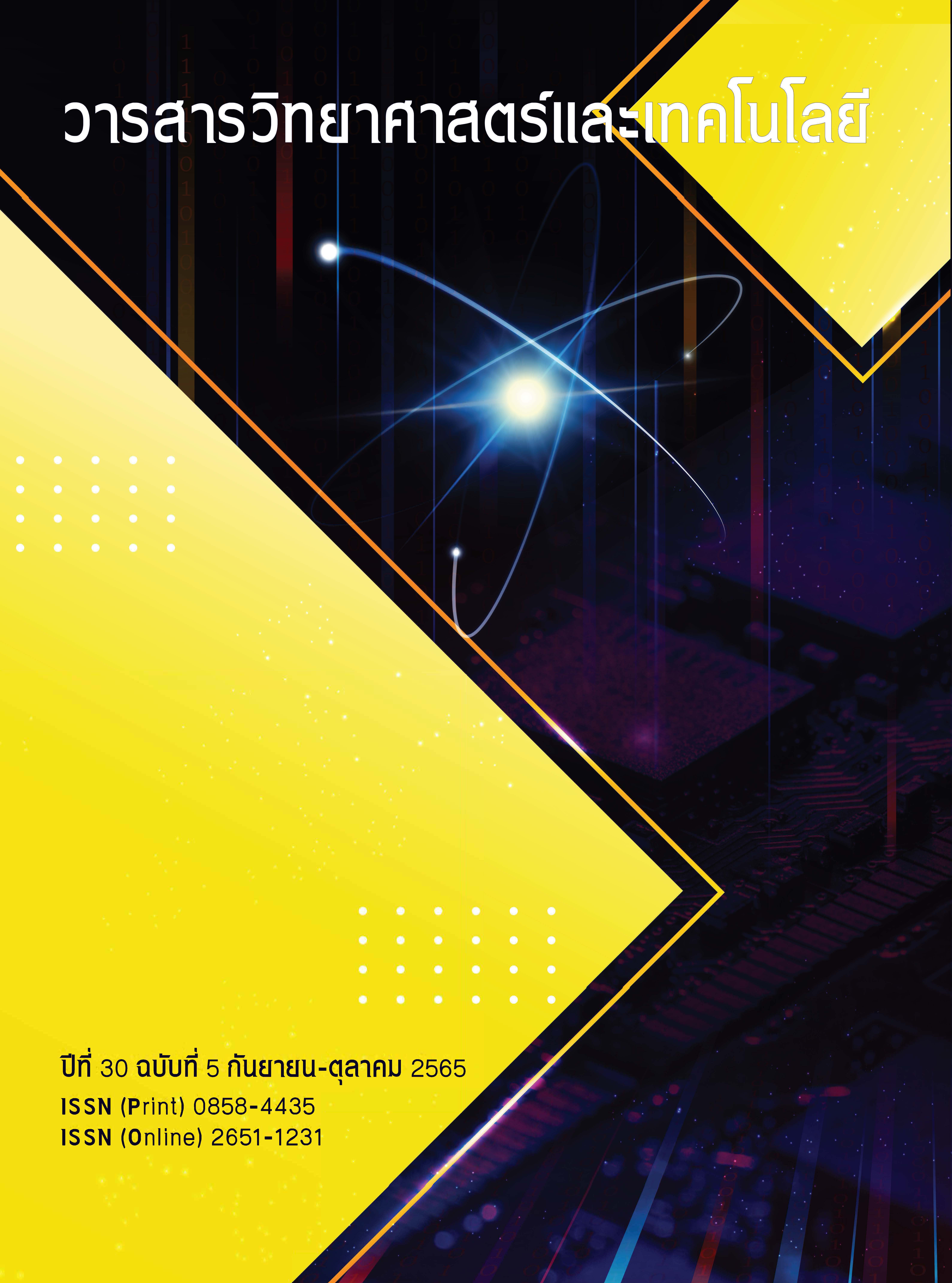Comparison of Water Quality Classification Methods in Thailand
Main Article Content
Abstract
The objective of this research was to compare the classification of water quality with binary logistic regression analysis, decision tree, and K-Nearest Neighbors using the accuracy group classification as a criterion to compare the efficiency of each method. The data used in the study were from water sources throughout Thailand collected by the Water Quality Management Division, Pollution Control Department from January 1, 2018, to January 1, 2021. The water quality is classified into two groups; the water quality is standards and is not standards. A total of 14 independent variables were used in the study. The datasets were divided with a 10-fold cross-variation. The results showed that according to the binary logistic regression analysis, the decision tree selected variables, including water turbidity, total coliform bacteria, ammonia-nitrogen, fecal coliform bacteria, dissolved oxygen, and organic water, have the highest accuracy of 89.64%. The decision tree selected for all independent variables has an accuracy value of 88.71 %. While K Nearest Neighbors selected all independent variables have the lowest accuracy value of 79.05 %
Article Details
References
Pollution Control Department. Thailand State of Pollution Report 2021, Available Source: https://www.pcd.go.th/publication/26626, April 2, 2022. (in Thai)
Pollution Control Department. Total score of water quality 5 parameters, Available Source:http://iwis.pcd.go.th/module/wqi_calculate/wqi.pdf, February 2, 2022. (in Thai)
Gakii, C., & Jepkoech, J. (2019). A classification model for water quality analysis using decision tree. European Journal of Computer Science and Information Technology, vol. 7(3), 1-8.
Ramadhani, D., Afdal, M., & Rahmawita, M. (2021, February). The Classification Status of River Water Quality in Riau Province Using Modified K-Nearest Neighbor Algorithm with STORET Modeling and Water Pollution Index. In Journal of Physics: Conference Series (Vol. 1783, No.1, p. 012020). IOP Publishing.
Wechmongkhonkon, S., Poomtong, N., & Areerachakul, S. (2012). Application of artificial neural network to classification surface water quality. World Academy of Science, Engineering and Technology, 6(9), 574-578.
Najah, A., Elshafie, A., Karim, O. A., & Jaffar, O. (2009). Prediction of Johor River water quality parameters using artificial neural networks. European Journal of scientific research, 28(3), 422-435.
Diamantopoulou, M. J., Papamichail, D. M., & Antonopoulos, V. Z. (2005). The use of a neural network technique for the prediction of water quality parameters. Operational Research, 5(1), 115-125.
Areerachakul, S., & Sanguansintukul, S. (2009, November). Water quality classification using neural networks: Case study of canals in Bangkok, Thailand. In 2009 International Conference for Internet Technology and Secured Transactions, (ICITST) (pp. 1-5). IEEE.
Pudchaya, S. (2017). Assessment of water quality of Bang Pakong River using multivariate analysis. Burapha Science Journal. Vol. 22 No. 2. 183-193. (in Thai)
Saichon, S.(2016), Multivariate analysis. Bangkok. Chamchuree Products Co., Ltd. (in Thai)
Anupong, S. (2021). Data Mining Guide with RapidMiner Studio. Mahasarakham Business School, Mahasarakham University, Mahasarakham. (in Thai)


